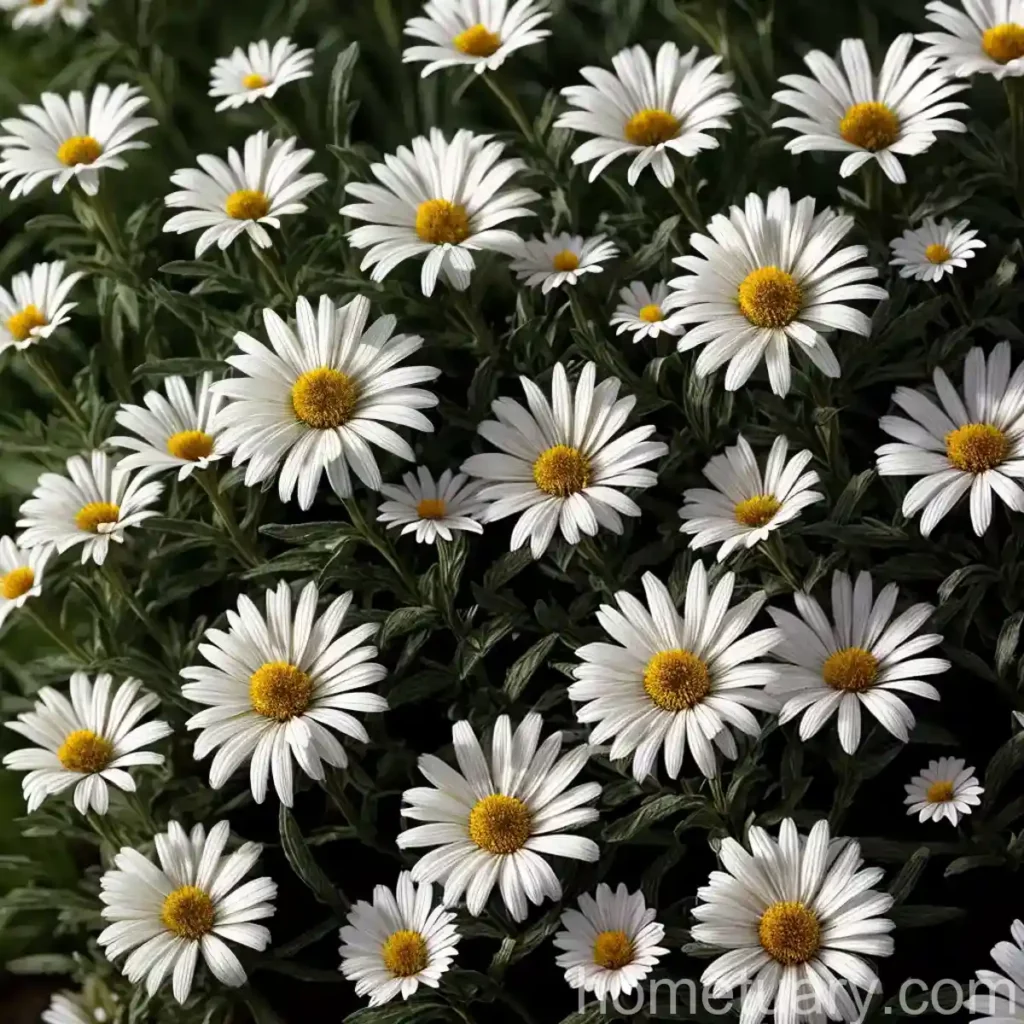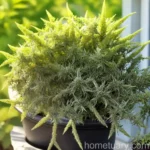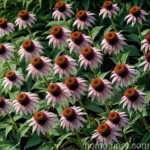The Amazing Shasta Daisy (Leucanthemum x superbum ‘Summer Snowball’)
Introduction
Plants are an essential part of our natural environment, bringing beauty, sustenance, and ecological diversity to the world around us. Among the vast array of botanical wonders, the Shasta Daisy stands out as a particularly charming and popular member of the plant kingdom. Known scientifically as Leucanthemum x superbum ‘Summer Snowball’, this delightful perennial brings joy to gardeners and nature enthusiasts alike with its stunning appearance and ease of care.
In this comprehensive guide, we will delve into the fascinating world of the Shasta Daisy, exploring its cultural significance, practical uses, care requirements, propagation methods, and much more. Whether you are a seasoned gardener or a newcomer to the world of botanical wonders, there is something for everyone to discover about this beloved flower.
What is the Shasta Daisy (Leucanthemum x superbum ‘Summer Snowball’)?
The Shasta Daisy, scientifically known as Leucanthemum x superbum ‘Summer Snowball’, is a flowering perennial plant that belongs to the Asteraceae family. This delightful plant is renowned for its classic white petals and golden yellow center, creating a timeless and elegant aesthetic that brightens any garden or landscape.
Key Takeaways – Shasta Daisy (Leucanthemum x superbum ‘Summer Snowball’)
Before we delve into the intricate details of Shasta Daisy cultivation and care, let’s take a moment to highlight the key aspects of this remarkable plant.
- Scientific Name: Leucanthemum x superbum ‘Summer Snowball’
- Family: Asteraceae
- Common Name: Shasta Daisy
- Appearance: Classic white petals with a golden yellow center
- Perennial: A long-lived plant that returns year after year
- Hardiness: Reliable and adaptable to various growing conditions
- Cultural Significance: A beloved garden favorite with symbolic connotations
- Uses: Ornamental, landscaping, and ecological support
- Popularity: Widely cultivated and cherished by gardeners and horticultural enthusiasts
- Vigorous Growth: Robust and resilient, capable of thriving in diverse environments
Now that we have a clear overview of the Shasta Daisy, let’s embark on a journey to explore its cultivation, care, and fascinating characteristics in greater detail.
Shasta Daisy Cultivation and Care
Cultivating a flourishing Shasta Daisy garden requires attention to several key factors ranging from soil composition and sunlight to watering frequency and pest management. In this section, we will break down each essential aspect of Shasta Daisy care, providing invaluable insights for enthusiasts seeking to nurture these beautiful plants.
Water
Adequate water supply is essential for the healthy growth and blooming of Shasta Daisies. While these plants are relatively resilient, they benefit from consistent moisture, especially during the active growing season. Here are some key considerations for watering Shasta Daisies:
- Regular Watering: Provide consistent moisture to the soil, ensuring that it remains evenly moist without becoming waterlogged.
- Avoid Drought Stress: Particularly in hot and dry climates, it is crucial to prevent drought stress by watering Shasta Daisies during dry spells.
- Morning Watering: Watering in the morning allows the foliage and soil to dry throughout the day, minimizing the risk of fungal diseases.
Sunlight
Sunlight plays a pivotal role in the development and flowering of Shasta Daisies. These plants thrive in bright, sunny conditions, although they can tolerate partial shade as well. Here are some important considerations regarding sunlight requirements:
- Full Sun: Aim to plant Shasta Daisies in locations that receive at least six hours of direct sunlight each day for optimal blooming.
- Partial Shade: While Shasta Daisies prefer full sun, they can tolerate partial shade, especially in regions with intense heat.
- Orientation: Ensure that the planting site allows the daisies to receive adequate sunlight throughout the day, accounting for any obstructing structures or trees.
Fertilizer
Fertilizing Shasta Daisies can contribute to robust growth, vibrant blooms, and overall plant health. However, it is crucial to apply fertilizer judiciously to avoid excessively lush foliage at the expense of blossoms. Here are some key fertilizer guidelines:
- Balanced Fertilizer: Incorporate a balanced, all-purpose fertilizer into the soil in early spring to provide essential nutrients for the growing season.
- Avoid Excessive Nitrogen: Limit the use of high-nitrogen fertilizers, as they can promote excessive foliage growth at the expense of flowering.
- Top Dressing: Consider top dressing the soil around Shasta Daisies with compost or organic matter to enrich the soil and sustain healthy growth.
Soil
The soil composition plays a critical role in the overall health, vigor, and flowering capacity of Shasta Daisies. Understanding the ideal soil requirements is essential for cultivating thriving plants. Here are some key considerations regarding soil:
- Well-Draining Soil: Shasta Daisies thrive in well-draining soil that prevents waterlogging and ensures adequate aeration for the roots.
- pH Level: Aim for a slightly acidic to neutral soil pH range of 6.0 to 7.0 for optimal nutrient uptake and overall plant health.
- Enriched Soil: Incorporate organic matter, such as compost or well-rotted manure, into the soil to enhance its fertility and structure.
Pruning
Pruning is an essential aspect of Shasta Daisy care, promoting tidiness, encouraging repeat flowering, and preventing the plant from becoming overly dense. Here are some key pruning tips for Shasta Daisies:
- Deadheading: Regularly remove spent blooms to encourage continuous flowering and prevent the plant from expending energy on seed production.
- Cutting Back: In late summer or early fall, consider cutting back the foliage and spent stems to promote a flush of new growth and blooms.
- Spring Pruning: In early spring, trim away any dead or damaged foliage to rejuvenate the plant and promote vigorous growth.
Propagation
For gardeners interested in expanding their Shasta Daisy collection or sharing these delightful plants with others, propagation is an invaluable skill to master. Shasta Daisies can be propagated through various methods, including division, stem cuttings, and seed sowing. Here are some key pointers for successful propagation:
- Division: Divide established clumps of Shasta Daisies every two to three years in early spring or early fall to create new plants.
- Stem Cuttings: Take semi-ripe stem cuttings in mid-summer, ensuring that they have a node and several leaf pairs, and propagate them in a suitable growing medium.
- Seed Sowing: Collect ripe Shasta Daisy seeds in late summer, sow them in a seed tray or directly into the garden soil, and provide favorable conditions for germination.
Container Popularity
The charming allure of Shasta Daisies extends to container gardening, offering a versatile and visually appealing option for gardeners with limited space or a preference for potted plants. Here are some key considerations for growing Shasta Daisies in containers:
- Container Size: Select a spacious container with adequate drainage holes to accommodate the robust root system of Shasta Daisies.
- Well-Draining Soil: Fill the container with well-draining potting mix to provide a conducive growing environment for the daisies.
- Watering: Monitor the moisture levels in the container and water as needed to maintain consistent soil moisture without waterlogging.
Common Diseases and Pest Management
Maintaining the health and vitality of Shasta Daisies requires vigilance against potential diseases and pest infestations that can compromise the well-being of these plants. By identifying common issues and implementing appropriate control measures, gardeners can protect their cherished daisies and foster their flourishing growth.
Disease Diagnosis
Shasta Daisies are generally resistant to many common plant diseases; however, they can occasionally fall prey to certain issues that warrant attention. Here are some key diseases that may affect Shasta Daisies:
- Powdery Mildew: A common fungal disease that appears as a powdery white coating on the foliage, leading to reduced vigor and unsightly appearance.
- Leaf Spot: Characterized by dark spots or lesions on the leaves, leaf spot diseases can impact the overall health and aesthetics of Shasta Daisies.
- Crown Rot: Excessive soil moisture or poor drainage can contribute to crown rot, causing the plant to wilt and decline.
Common Pests
While Shasta Daisies are generally resilient against many pest problems, certain insects may occasionally target these plants, necessitating appropriate measures for control and prevention. Here are some common pests of Shasta Daisies:
- Aphids: These small, sap-sucking insects can cluster on the succulent growth of Shasta Daisies, causing distortion and stunted growth.
- Thrips: Thrips are tiny, slender insects that can damage the flowers and foliage of Shasta Daisies, leading to browning and distortion.
- Slugs and Snails: These voracious herbivores can feed on the tender foliage of Shasta Daisies, leaving behind ragged edges and unsightly damage.
Botanist’s Tips
Drawing from insights gleaned through scientific research, field observations, and horticultural practices, botanists offer invaluable tips for cultivating, preserving, and celebrating the remarkable beauty of Shasta Daisies. Here are some expert recommendations to elevate your Shasta Daisy gardening experience:
- Mulching: Apply a layer of organic mulch around Shasta Daisies to conserve soil moisture, suppress weeds, and regulate soil temperature.
- Companion Planting: Pair Shasta Daisies with companion plants such as lavender, salvia, or catmint to create visually appealing and ecologically beneficial garden displays.
- Wildlife Habitat: Embrace the ecological role of Shasta Daisies by providing a habitat for beneficial pollinators and creating a haven for diverse wildlife.
- Folklore and Symbolism: Delve into the rich folklore and symbolic significance of Shasta Daisies, uncovering the cultural narratives woven around these captivating flowers.
Fun Facts
Let’s discover some engaging and lesser-known facts about Shasta Daisies, shedding light on the intriguing aspects of these beloved plants:
- Shasta Daisies derive their name from Mount Shasta in northern California, where these resilient flowers thrive in the wild.
- The Summer Snowball variety of Shasta Daisy is prized for its abundant, long-lasting blooms and compact growth habit, making it an ideal choice for garden borders and containers.
- Shasta Daisies are a source of nectar for various pollinators, including butterflies and bees, contributing to the diversity and vitality of the ecological landscape.
- In traditional herbal medicine, Shasta Daisies were used to create remedies for various ailments, harnessing the plant’s natural healing properties.
Links to External Resources
To expand your knowledge and appreciation of Shasta Daisies, consider exploring the following resources:
- American Daisy Society: https://www.americandaisysociety.org/
- Royal Horticultural Society: https://www.rhs.org.uk/
- National Gardening Association: https://garden.org/
- Botanical Gardens Conservation International: https://www.bgci.org/
In conclusion, the Shasta Daisy (Leucanthemum x superbum ‘Summer Snowball’) captivates our hearts with its enduring beauty, cultural significance, and ecological contributions. By embracing the art of cultivation and care, we can foster the flourishing growth of these remarkable plants, creating vibrant garden displays and nurturing a deeper connection with the natural world.
So, whether you are planning to enrich your garden with the timeless elegance of Shasta Daisies or striving to uncover the fascinating aspects of these beloved flowers, the journey of discovery promises to be both rewarding and enriching. Embrace the allure of the Shasta Daisy and embark on a botanical adventure that celebrates the resplendent beauty of nature’s enduring marvels.















